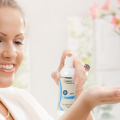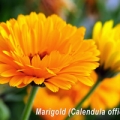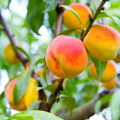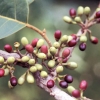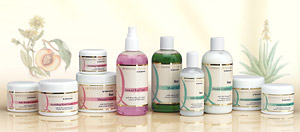Hydrosol, Hydrolat, Floral Water – What’s The Difference?
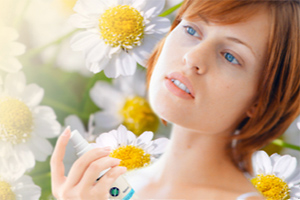 Hydrosol, hydrolat, hydrolate, aqueous distillate, aromatic water, distillate water, floral water and flower water.
Hydrosol, hydrolat, hydrolate, aqueous distillate, aromatic water, distillate water, floral water and flower water.
Most aromatherapy fans will have heard some of these descriptive terms before and will already know what they mean.
Some may have heard some of them but remain unsure whether they all mean the same thing. Actually they don’t, and even trained aromatherapists don’t always understand their significance when it comes to defining these liquid aromatic treasures.
And that’s because the use and meaning of some of these terms have changed over time which has lead to confusion, particularly with newcomers to aromatherapy who have been told about them from an old, or unreliable source. Also, some of the words used today don’t really mean what they represent and there is no universal agreement as to which precise term is correct!
Broadly speaking, the first six of the above terms are all used interchangeably to describe either the water that remains after distilling an essential oil, or more rarely these days, the fragrant water specifically produced by soaking a plant in boiling water, such as witch hazel or cornflower. In other words, these products are made specifically as the primary product and are not the by-product of steam distillation.
The last two terms of floral water and flower water may also represent the remaining water following steam distillation, or they could be describing something entirely different. When Quinessence first began in the 1980’s the only names for distillate waters (in English speaking countries) were either floral water, or flower water. Same as today, back then these terms did not distinguish between natural products or the synthetic, man-made ones, nor did they accurately describe the product if it was derived from a plant or herb rather than a flower. Which do you think is the more accurate description, frankincense flower water, or frankincense hydrosol?
How are hydrosols made?
During the process of steam distillation to obtain essential oil, steam is passed through the plant material (herb, flowers etc) to release the oil, after which this steam is cooled to return it to its original water state. Since the distilled essential oil is lighter than the water it floats on the top and then tapped off separately.
The remaining water contains small quantities of essential oil plus many of the water-soluble (hydrophilic) parts of the plant. Supercharged with more active principles than the essential oil from the plant, this ready to use product offers a safe and convenient way to deliver a wide range of therapeutic and cosmetic benefits directly to the skin, with no need for dilution. What you now decide to call this product is where things can become a bit confusing.
That was then, but this is now . . .
The essential oil industry has always used expressions such as aqueous distillate, aromatic water or distillate water to describe the water left over from distillation, but when repackaged in smaller sizes these products have been marketed for hundreds of years as ‘floral waters’ to make them sound more appealing. At least, that was the case until aromatherapy came along with a bunch of fancy new names!
In France the co-product of distillation has long been known as a hydrolat, or hydrolate, and from memory I recall this word first entering into aromatherapy vocabulary during the mid 1980’s. In the USA during the early 1990’s the term hydrosol was borrowed (it is used in other industries) and was applied to mean the water remaining after distillation, either as a product in its own right, or as a by-product of making an essential oil. So now we had two new names to add to the list!
Real versus synthetic
What many people are not aware of is it has been common practice since around 1950 to manufacture products sold as floral waters by adding pure essential oils or synthetic perfumes to water by means of alcohol or some other unwanted solvent, in order to manufacture them quickly and at a lower cost. The availability of true hydrosols is restricted to the number of harvests a crop can produce, which is typically only once a year, although there are exceptions. This regularly causes a shortage of supply until the next year’s crop is distilled.
This scarcity, plus the cost of transporting hydrosols in bulk around the world explains why manufacturing them artificially is much more convenient and profitable to the industries that use them. In case you were unaware, a large proportion of the cost of hydrosols is due to the cost of shipping them from the distilleries around the world to a whole range of manufacturers and suppliers outside of our industry. Of course, the high cost of shipping a low-value commodity will always tempt manufacturers and resellers to look for cheaper alternatives.
Whilst it may be considered acceptable to manufacture floral waters synthetically for use in a wide range of commercial applications such as linen-water sprays or perfume sprays etc, it is not acceptable if they are to be used in aromatherapy. Man-made floral waters are not the same as true hydrosols. Here’s why.
The science bit
When distilling plant material for its essential oil, most of the hydrophilic (water-soluble) components of the plant are absorbed into the steam and then cooled back into condensate (water), and are therefore not carried over to the collected essential oil. This means the essential oil has not captured all of the plants active constituents because some of them have been dissolved into the water (hydrosol). Only a small amount of essential oil is held in solution within the hydrosol together with the hydrophilic components.
This is the reason why hydrosols don’t smell the same as the essential oil from the same plant; a large part of the aroma is captured in the essential oil, while the water-soluble components are in the hydrosol. Generally speaking, only rose and orange flower hydrosols give an accurate representation of the plants natural fragrance, with perhaps lavender and rosemary being next in line, aromatically speaking.
In comparison, Roman and German chamomile hydrosols smell nothing like the plants or their essential oils – but they do still have unique and irreplaceable therapeutic properties. Nothing beats these hydrosols on cotton eye-pads for reducing puffiness and dark circles from under the eyes – the essential oils can’t be used in the same way for reasons of safety.
Not the same . . .
So the process of distillation produces two distinct products, each with specific healing benefits; the essential oil which is the primary product, and the hydrosol which is a co-product. This is not to say the hydrosol is inferior, it just collects different components from the plant material than the essential oil does.
And this is why adding an essential oil or perfume compound to water will not produce the same therapeutic benefits as a natural hydrosol. The healing properties of the hydrophilic components in a hydrosol are simply different to those of the essential oil. This type of man-made product will usually smell nicer than a true product of distillation, but it will lack the unique wealth of therapeutic properties available in the real thing. And even worse, these products can cause skin irritation that may lead to long-lasting sensitization problems.
So this is where deception can and does occur. It is becoming increasingly common for synthetically manufactured products to appear in the aromatherapy market misleadingly referred to as hydrosols or hydrolats by some manufacturers and suppliers, thus making the situation confusing and misleading.
To avoid being duped when buying hydrosols be sure to seek reassurances that you are buying a naturally distilled co-product, and not a re-constituted counterfeit. Your skin will thank you for doing so.
Copyright © Quinessence Aromatherapy Ltd 2020. Written by Geoff Lyth

